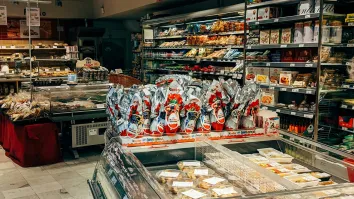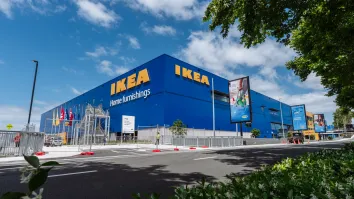Broadening global reach by leveraging digital channels

With Internet use growing rapidly across most of the world, retailers looking for international expansion have an unprecedented opportunity to expand into digital channels in emerging markets.
Identifying the best markets for Internet-based expansion and developing an efficient model for each market requires careful analysis of opportunities and expectations across strategy, payments and logistics. Euromonitor International’s whitepaper, Strategies for Expanding into Emerging Markets with E-Commerce, highlights what retailers can do to ensure effective market entrance and prevent expensive missteps.
E-commerce goes global
The growth in e-commerce over the past five years has transformed consumers’ spending and shopping habits, affecting emerging and developing countries’ product pricing, consumer behaviour and product availability. E-commerce is projected to grow at a CAGR of 12% globally from 2016 to 2021. In contrast, store-based retailing, which continues to be the biggest channel
by value, is set to grow at a CAGR of just 2% over the same time period.

To date, much of this growth has taken place in developed markets. However, as more consumers in emerging and developing countries gain access to the Internet and consumer and investor interest increases along with intensifying retailing competition, e-commerce will become more prevalent.
Emerging market economies will become increasingly attractive destinations for foreign players looking to expand their global footprint and enhance their product and service offerings, impacting prices, product quality, variety and the range of services available online.
Growing connectivity
Understanding local consumers is essential for shaping a successful strategy. Home to more than 85% of the world’s population and totalling six billion people in 2016, emerging markets will continue to drive global disposable income growth through to 2030. As a result of rising incomes and the expansion of the middle classes, emerging and developing countries represent attractive opportunities for consumer goods companies.
Additionally, Internet penetration will continue to grow. The percentage of population with Internet access in emerging and developing countries is set to increase from 34% in 2015 to 44% in 2020 and 49% in 2025.
This increased access is changing and informing consumers’ decision making process along the path to purchasing. For this reason, it is imperative that companies consider how demographic factors differ between emerging and developed markets.
Expansion of the middle classes
In 2016, there were more than 1.1 billion households with an annual disposable income of more than US$10,000 (in purchasing power parity terms) across major emerging markets and developing countries. The expansion of the middle classes in these countries continues to bring a new way of living.
There was a clear disparity among the world’s largest emerging markets and the average incomes of their middle-income households from 1995-2015. Saudi Arabia, for instance, had the highest average disposable income per household, at US$48,525 in 2016, while Ukraine had only US$3,986.
At the same time, China saw aggressive growth in its average disposable income from US$1,539 to US$15,338 during the past 20
years. Similarly, countries such as Kazakhstan and Vietnam increased their disposable incomes by 351% and 402% respectively between 1995 and 2016.
These disparities demonstrate how consumer conditions vary significantly across emerging and developing countries and highlight the importance of tailoring retail sales strategies to suit market-specific conditions.
Rise of the millennial consumer

A natural and gradual shift in consumer demographics will continue to shape commerce around the globe. Members of the millennial generation, also known as Generation Y, will take centre-stage as consumers in the future. In fact, millennials represented more than 1.5 billion people in emerging markets in 2015. In both developed and emerging markets, the demographic cohort following Generation X is the first generation to come of age using digital technology and services, making them a prime audience for retailers to reach through the Internet.

Despite the fact that baby boomers are currently the largest generation of active workers, millennials have increasing purchasing power and decision-making influence in economies worldwide. Given the prominence of this demographic, it is critical for companies to know how this generation makes decisions along the purchasing path.
Having grown up with the Internet, millennials are highly attached to their smartphones, which they use for browsing, researching products and services, conducting price comparisons, and when companies create a trusted payment environment and comfortable user experience, completing purchase transactions.
To access to the full whitepaper, visit https://goo.gl/smHMu9



















 Advertise
Advertise






